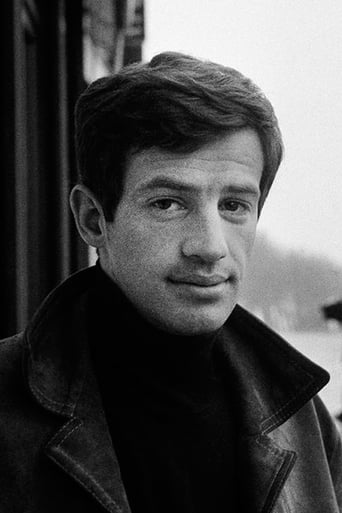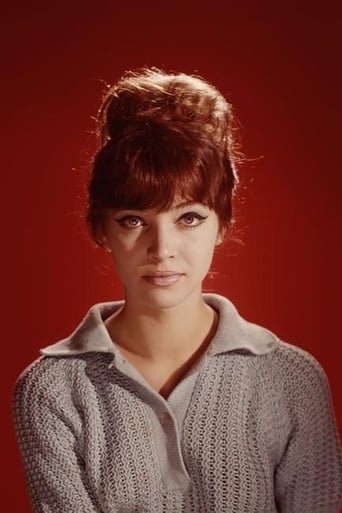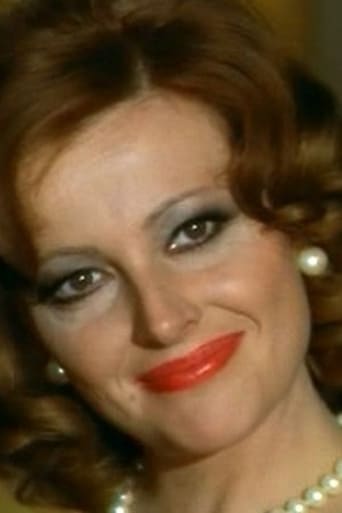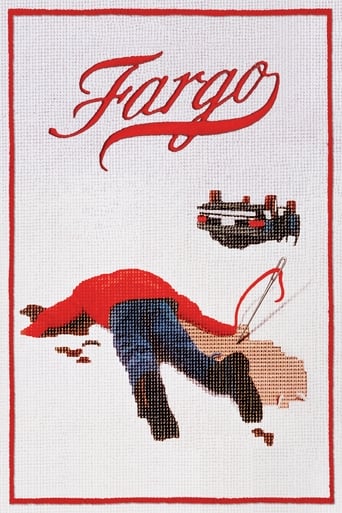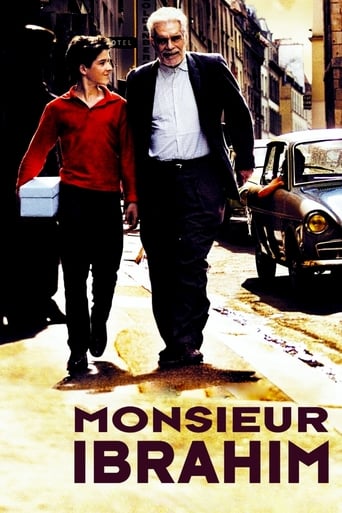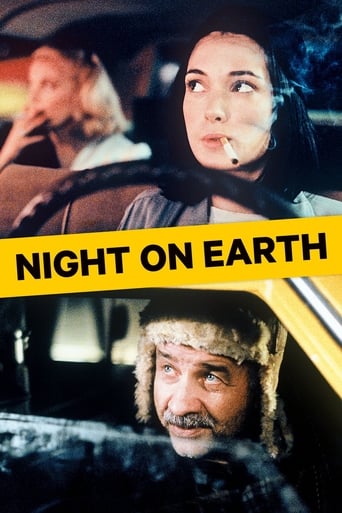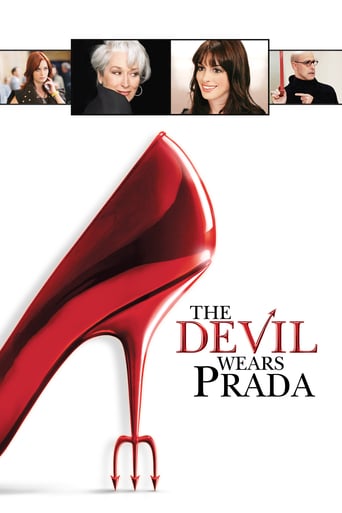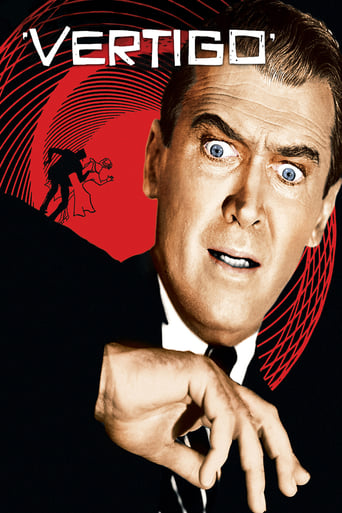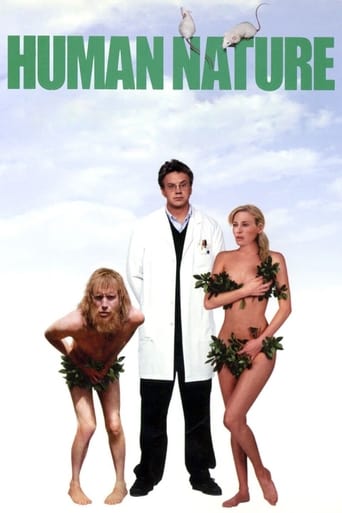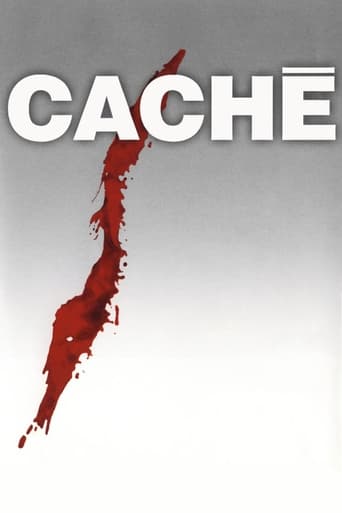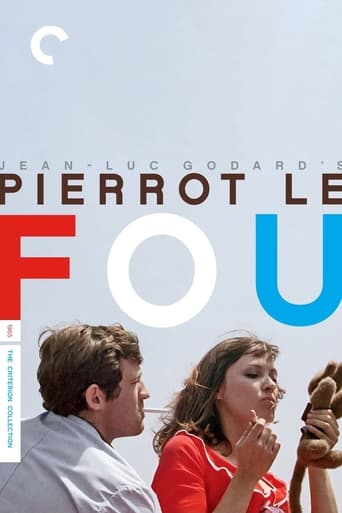

Pierrot le Fou (1965)
Pierrot escapes his boring society and travels from Paris to the Mediterranean Sea with Marianne, a girl chased by hit-men from Algeria. They lead an unorthodox life, always on the run.
Watch Trailer
Cast


Similar titles
Reviews
Godard films can be broken into two periods: before Pierrot le Fou and after Pierrot le Fou. Before, the French iconoclast was still somewhat concerned with narrative coherence; afterwards, not so much. As such, Pierrot le Fou occupies an interesting spot in his filmography as it bridges the two periods. It has a conventional plot like his earlier work, but the style is much closer to the experimental efforts that comprise the vast majority of his post-1965 output. So how does it all fit together?The narrative here is very flimsy: out protagonist Ferdinand just sort of gets swept along with Marianne's cross-country crime spree without much in the way of explanation after two brief scenes of conversation. This is not atypical for Godard, but even here we're given little justification for why the characters do anything. Ferdinand is apparently dissatisfied with his bourgeoisie lifestyle which is conveyed solely by a rather bizarre party sequence while Marianne is just a whirlwind in human form.Once the characters are on the road, the plot starts and stops randomly with plenty of scenes consisting of characters sitting around and talking about sophisticated things, a Godardian trademark. But there are also several scenes of the duo just messing around. Of the later, there is a rather offensive scene where Marianne and Ferdinand put on a skit about the Americans' current involvement in Vietnam. Marianne wears what is essentially yellow-face, Ferdinand garbles out something in broken English and the message basically boils down to "Americans are violent buffoons." I don't take offense at anti-Americanism per say (a lot of it is deserved) so much as the presentation of it and this particular scene feels crude and childish.Eventually the narrative develops into a plot involving gangsters pursuing the duo and Marianne betraying Ferdinand by running away with her real boyfriend. It just feels tacked on. Given Godard shot the whole film with no script, it's not exactly surprising and this incoherence seems to be intentional. I can't really say I'm a fan however. Nonetheless, the ending, where Ferdinand paints his face blue and blows himself up only to regret it at the last moment, is very well done and rightfully remains one of the French New Wave's most iconic moments.Stylistically the film is also a mixed bag. On the positive end of things, the film looks gorgeous. Rarely have I seen colors look so vibrant and as expressive as I've seen here. On the other hand, the dialogue gets repetitive very quickly, Ferdinand says some iteration of "My name is Ferdinand" after Marianne calls him Pierrot close to a dozen times which gets annoying. The breaking of the fourth wall, while cute at first, gets tiresome the more Godard does it. The cutaways to Ferdinand's poetry are also rather irritating especially since it adds nothing to the film unless you're fluent in French.Overall, Pierrot le Fou is a rather messy blending of Godard's narrative and experimental styles that has some nice highlights to it, but can be a bit of a slog to get through unless you just happen to really love Godard and the French New Wave. I personally enjoy the visual aspects of the film but the cerebral parts of it ended up leaving me cold. Even so, it's still entertaining enough for me to give it a hesitantly positive rating.
And not just any mental patients but French ones.A great gift to all hipsterdom, just as any Godard film is. After all, isn't it hipsters that need Belmondo to tell them that "life is a mystery even when you know where you're going and who you are"? Hipsters don't know stuff like that, you see, so they watch these pretentious but ultimately intellectually shallow films to tell them this kind of stuff. Hipsters are like little children unaware of the world that surrounds them, confused by the tinniest things (no, not pensive: I mean confused), but instead of actually learning about their environment they prefer to be reminded time and time again how confusing and mysterious it is by Godard, Bergman and all the other con-artists who just love injecting their silly films with aimless fortune-cookie wisdom. Give a hipster a fortune cookie and he will discard it with pseudo-intellectual contempt. Give that same hipster the exact same fortune-cookie within the context of a hipster movie and he eats it up like a juicy hamburger.The difference between an American and a Frenchman doing a Bonnie & Clyde type of story is that the American doesn't expect you to identify and sympathize with the sociopath couple. (Unless he is Oliver Stone.) Godard is such a demented, pompous little "poet" that you just know he condones the couple's behaviour, and I mean fully. He is absolutely in love with their anarchy, nihilism and sociopathy. (He's a left-winger, after all, they love evil – which is ironic since they don't believe it exists.) Of course, Godard might have second thoughts if they stole HIS car, took HIS money; then again, the godards of this world don't think that deeply: they only ever scratch the surface, which is oh-so romantic. As the girl says: "isn't there thought in emotion?" No, there friggin' isn't, you onion-smelling fruitcake. Romanticism and its child-like love-affair with emotion are the reason we eventually received that divine gift called Marxism that killed at least 100 million people and ruined the lives of 10 times that much. It's the pompous and delusional cloud-9 pseudo-intellectual clowns such as Godard that make the work and mission of ISIS so much easier. The more such buffoons we have (hipsters) the easier lunatics will get to lop off all of our heads. (I believe that hipsters secretly want to have their heads lopped off. The self-loathing ninnies are misfit losers.)Still, the movie is semi-fun to watch (the first half), if nothing because it was nicely shot. There's no hand-held camera poop, no ugly mono-colours, no lack of music. This was the 60s, after all, decades before the leader of the New Wave Of European Hipsterism started raping the cinema world. Lars von Trier, you dope, I'm talking about you. The scenery is quite nice, and for once a French movie features an attractive leading lady, which is even more incredible than Belmondo's fanciful story about Moon's sole inhabitant. Godard has his ass so far up his head No, let me start over. Godard has his head so far up his ass that he sees nothing embarrassing about a road-movie psycho writing a journal into which he injects stale New French Wave poetry. Or pottery, as the Pythons would say. You know the deal: random words and musings piled together. I can only imagine what a stuck-up, arrogant bastard Godard must have been to actually do this. The balls this tiny man must have had to be so openly and unabashedly pretentious, without fearing ridicule. Not ridicule from hipsters, of course, but from intelligent people, you know, non-hipsters, who can smell horse-manure from miles away. Whenever Belmondo looks at the viewer, we just go "oh no, there he goes – he's gonna preach again!" Or say some non-sequitor that in hipster logic actually has a connection to the plot or the characters. The last thing I need is actors looking at me with a dumb glare. You're not being smart, Luc, just silly.The humour never works. After all, this is a French movie. The most embarrassing attempt at failed comedy is the Vietnam War scene in which Bonnie impersonates a Vietnamese woman. As much as self-loathing U.S. hipsters adore any criticism or mockery of their own nation, how are these politically-correct modern-day hippies ever going to look past that? Oh, but I forget: it's OK to mock Orientals, it just isn't acceptable to make fun of blacks. That's the no-no line a hipster will never cross. Blacks are the protected species, never Orientals. Who's the racist now?How about "tourists are modern-day slaves"? Man, Godard, you were wise beyond your height. That's the stupidest and the most blatantly left-wing thing I've heard in the movie. Also, what appears to be Godard's hatred of Hollywood is just a thinly-veiled extension of his predictable anti-Americanism. So this "great artist" resorts to being just another cheesy French stereotype who hates Americans? Ts ts ts, not very unique or artistic at all. Godard's laughable, amateurish, hate-filled depiction of U.S. sailors is about as accurate as Criswell's predictions that people will colonize Mars by 1988. Through this one scene (not to mention his entire filmography) Godard reveals a shoulder-chip that's the size of his Ego – and that's one damn big chip.So how does a typical hipster watch this film? For example, when Belmondo says some meaningless drivel such as "we have reached the age of man and his double". The hipster goes "yes, wow, so profound!". Ask the hipster what it means, and he'll have to first think hard – and THEN give you some gobbledygook answer that waxes poetic, spinning even bigger nonsense out of the quote.The movie disintegrates in the second half. That whole midget sub-plot is just random writing, totally pointless.
Director Jean-Luc Godard has always been a baffling and enigmatic figure to yours truly. Considered one of the most important figures in film history, Godard's reputation doesn't help when many a film student sits down to watch Breathless (1960) for the first time. While I have only seen three of his films, each one showcases the talent of an artist, very purposely engaging with his audience in new and interesting ways. While his projects may be alienating to most, you have to admit his imagery sticks with the viewer long after the credits roll. Whether it be the shuttered, moody apartments of Alphaville (1965) or the extended chaos of the "carmageddon" in Weekend (1967), there's just something both literate and literal that immerses the curious mind to play along if only to see where he's going.Pierrot le Fou is said to be one of Godard's last early-career masterpieces, before going off the radical deep-end. It brings to the screen the auteur's wry suspicion towards bourgeois complacency, an eye towards the garish, and an almost giddy sense of humor. French star Jean-Paul Belmondo plays Ferdinand the Pierrot (roughly translated to Ferdinand the sad clown). Unhappy with his trite existence as an obedient husband, doting father and successful ad man, Pierrot runs away with his mistress Marianne (Karina). The two make their way to the south of France, borrowing and stealing their new found life from those absent enough to be taken advantage of. Meanwhile the two are being chased by a duo of mobsters who are hoping to recover money the couple have stolen.The film is very roughly based on the novel "Obsession" by Lionel White. Known for stylized pulp fiction, Lionel White's book is about as American as Pierrot le Fou is French. The book is straight- forward, the film is eclectic; the film is intellectual in nature, the book satisfies baser instincts. We've seen this kind of uneasy cross-cultural pollination in many of Godard's work from Breathless hero Michel sporting a Bogart-esque fedora to the Dick Tracy comic- strip pop permeating through Alphaville. In the case of Pierrot le Fou, Godard's love of American iconography is most obvious with a very brief cameo by American auteur Samuel Fuller.As with all of Godard's work, the specifics of the plot are not important or entirely necessary. It is the mode to which the director makes the themes of his story clear. The first thing that grabs the viewer's attention is the color. Pierrot le Fou is Godard's first feature-length color film. In it, he uses a triadic palette to add a layer of pop art sensibility. Almost everything in the film is drenched in loud pigments of red and blue making the entire film resemble a live-action cartoon. Only instead of inviting the viewer into it's colorful world, it purposely alienates you.Godard increases this alienation with elliptical almost Lynch-ian editing and constant character asides that are often political in nature. In one cringe-worthy scene the young Anna Karina yabbers and tongue-clicks while wearing Vietnamese yellow-face to entertain a group of American sailors. While the scene aptly lampoons the Vietnam conflict, it does so in such an aggressively buffoonish way that even audiences of the time likely would have looked on with puzzlement. Then there's the collage-like structure of the film itself, which often goes on long tangents on mass media, socialism, pop culture, violence and the cinematic art form. It's all quite fascinating and Godard wisely infects his high art concepts with a lowbrow sense of humor. The balance reaches a boisterous crescendo when Marianne and Pierrot ditch their car in a mock wreckage...then the film continues for another hour.Out of all the film's I've seen by the master of the Nouvelle Vague, Pierrot le Fou is the best work I've seen, though I'm not sure it's because Godard is an acquired taste or it's truly a better film. It's certainly filled to the brim with awe-inspiring visual ideas and influential storytelling techniques that have become common among the American film intelligentsia. Godard's imaginative use of wordplay, puns and portmanteaus adds yet another layer of sophistication that upon repeated viewings (and a rudimentary understanding of French) can make anyone smirk with satisfaction. Pierrot le Fou is also the director's most accessible film, though certainly not a movie for novices.
Not only Pierrot (Ferdinand) but the whole movie is crazy. A married man returning home from a boring party meets there with a girl with whom he had a case five years before and is supposedly there to babysit his child (or children). He had not seen her since then. They decide then to leave at once and start a car run through the country getting involved in a series of meaningless peripeteia like stealing cars and money, filling the car tank and running without paying, setting a car on fire, entering with another in the sea on a beach and other minor events no less without an apparent reason and cooked through half-sentimental foolish dialogues during which he girl calls the man Pierrot though he keeps telling her that his name is Ferdinand without any reaction from her. We feel there is some story of arms traffic behind all this which is never clearly told or explained. At a certain point she is kidnapped by traffic rogues, kills one of them with a pair of scissors and runs away. Then it's the man who gets caught by the traffic rogues that torture him in order to know where the girl is. Then he is free again (did he escape or was set free by his captors after revealing where the girl is?). Then we see an old Lebanese countess proposing him to go with her on a boat but then the girl meets him again but suddenly escapes with another man that we don't know who he is and they kiss passionately each other. Our Pierrot Ferdinand chases them to the island where they went by boat and shoots and kills them both. The story(?) ends with Pierrot Ferdinand committing suicide in a way that would be funny if it wasn't tragic. He put 2 or 3 dynamite belts around his head but at a certain point he tried unsuccessfully to put off the fuse and we see the explosion in the horizon in the last scene. I have understood that Godard's movies don't have a sense, a clear story or a message. They are worth for what they are worth and their scenes and images are worth for what we see and nothing more which means very little for me. However since he is considered a great movie director by critics probably this is my fault.


